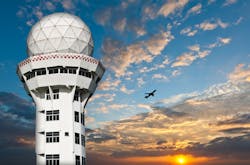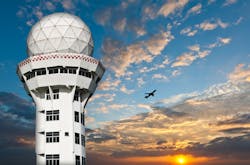Department of Transportation FY 2014 budget request: sufficient for surge and safety?
WASHINGTON, 10 April 2013. President Obama’s FY 2014 budget request for the U.S. Department of Transportation (DOT) includes investments in the Federal Aviation Administration’s (FAA’s) NextGen initiative, airport improvements, leadership awards, and more—but is it enough to accommodate growth and ensure safety?
The Fiscal Year 2014 budget request for the DOT, as described by the Office of the Secretary of Transportation in Washington, includes:
- Continued investment in the FAA’s on-going NextGen efforts to modernize the National Airspace System (NAS). Nearly $1 billion is proposed to continue our emphasis on the modernization of the Nation’s air traffic system (NextGen) initiative–which remains one of the Department’s highest priorities. Already, we are starting to see the benefits of NextGen, including improvements in efficiency, safety, and capacity of our aviation system. Our FY 2014 budget request continues work to modernize our Nation’s airspace, enhance safety, and improve the way people and aircraft fly.
- $2 BILLION FOR GRANTS-IN-AID FOR AIRPORTS: This funding will construct runways and other airport improvements such as runway safety area improvement projects and noise mitigation projects.
- $2 BILLION FOR TRANSPORTATION LEADERSHIP AWARDS: $2 billion is proposed for a program that encourages States and regions to implement innovative strategies to address pressing transportation needs.
- $1 BILLION TO ADVANCE NEXTGEN: These funds will improve airports and support NextGen modernization efforts. We will also invest in infrastructure projects that will accelerate NextGen capabilities. These construction projects will directly benefit the local communities and will be located throughout the Nation. Within this amount, $225 million is requested for a new NextGen future facility in the New York area.
The FY 2014 President’s Budget request of $15.6 billion supports FAA’s current programs in the areas of air traffic controller and safety staffing, research and development, and capital investment.
The Budget also advances the modernization of our air traffic system through NextGen–the next generation of air traffic control technology currently underway. NextGen will enable the FAA to build upon current capabilities and lay the groundwork for future technologies that will improve the safety, capacity, and efficiency of air travel by replacing ground-based radar surveillance with a modern satellite-based system. NextGen also capitalizes on the latest in aircraft technology. The advances provided by NextGen are helping the FAA move from a system of air traffic control to a system of modern air traffic management.
The FY 2014 President’s Budget requests $15.6 billion to invest in the safest, most efficient aerospace system in the world. This is a decrease of $350.9 million from the FY 2012 enacted funding level. This overall reduction is due largely to the proposed change to the Grants-in-Aid for Airports program. This proposal will focus Federal grant funding on smaller commercial and general aviation airports that do not have access to additional revenue or other outside sources of capital. Larger airports would have the option of generating funding by increasing Passenger Facility Charges.
Major program highlights of the FAA’s budget request include:
▶ OPERATIONS: The FY 2014 President’s Budget is requesting $9.7 billion for the operation, maintenance, communications, and logistical support of the air traffic control and air navigation systems. This represents an increase of 0.6 percent from the FY 2012 enacted level.
- The President’s Budget requests $7.3 billion and 31,017 full time equivalent positions for the Air Traffic Organization to provide the safe and secure air traffic control services to commercial and private aviation and in support of the military.
- Also included is $1.2 billion and 7,246 full time equivalent positions in aviation safety resources to continue to promote aviation safety by regulating and overseeing the civil aviation industry and continued air worthiness of aircraft, as well as certification of pilots, mechanics, and others in safety management positions.
- Included in the Operations request is an additional $30 million to maintain and operate new En Route Automation Modernization (ERAM) systems that became operational during FY 2012 and FY 2013. The ERAM system is replacing the forty-year old main computer software (known as HOST) used by air traffic controllers to guide airplanes flying at high altitudes at 20 en route control centers across the country. ERAM is at the heart of NextGen, helping to advance our transition to the new systems.
▶ FACILITIES AND EQUIPMENT (F&E): The FY 2014 President’s Budget requests $2.8 billion to enable FAA to meet the challenge of both maintaining the capacity and safetyof the current National Airspace while keeping a comprehensive asset modernization and transformation effort on track.
- Within these funds, the FY 2014 Budget requests $928 million for NextGen, an increase of $65 million or 7 percent over FY 2012 enacted levels. This funding will enable FAA to continue its ongoing modernization efforts in key areas.
Examples of specific projects include:
o Area Navigation/Required Navigation Performance: $32 million is requested to fund the consolidation of databases used to improve and develop new arrival and departure procedures at airports and to optimize the use of airspace and procedures in complex metropolitan areas with multiple airports.
o Automatic Dependent Surveillance Broadcast: $282 million is requested for the implementation of satellite-based surveillance capabilities.
o Air-to-Ground Data Communications: $115 million is requested for data communications, to accelerate the implementation of a text-based data communication system.
o NextGen Systems Development: $62 million is requested to conduct system-level engineering reviews of human factors, safety, environment, wake turbulence, future ATC communications and surveillance requirements.¾ The $1.8 billion balance of the President’s Facilities and Equipment request will be used to sustain current systems, including maintaining aging infrastructure, power systems, information technology, navigational aids, communications, surveillance, and weather systems. Examples of specific projects include:
o Terminal Automation Modernization/Replacement: $137 million is requested to modernize and standardize the automation systems at the FAA’s Terminal Radar Approach Control (TRACON) facilities and their associated Airport Traffic Control Towers (ATCT) throughout the National Airspace System.
o Electrical Power Systems Sustainment and Support: $85 million is requested to maintain the current Air Traffic Control system capacity by replacing aging, unreliable power system equipment to avoid power outages and service interruptions.
▶ RESEARCH, ENGINEERING AND DEVELOPMENT: The FY 2014 President’s Budget requests $166 million for Research, Engineering, and Development in FY 2014 to support the continuation of work in both NextGen and other research areas such as environmental research, safety research in areas such as fire research, propulsion and fuel systems, unmanned aircraft, advanced materials research, and weather research. This is a decrease of $1.6 million from FY 2012 enacted levels.
- The President’s Budget requests $12 million for the Joint Planning and Development Office (JPDO) to ensure the efficient coordination between all Federal partners whose decisions impact NextGen. The JPDO facilitates collaboration with the Federal partners (including FAA, Department of Commerce, Department of Defense, Department of Homeland Security, and NASA) in order to best prioritize multiagency concerns in the development of NextGen, including the integration of Unmanned Aircraft Systems (UAS) into the National Airspace System.
▶ GRANTS-IN-AID FOR AIRPORTS (AIP): The FY 2014 President’s Budget requests a $2.9 billion obligation limitation for AIP, a decrease of $450 million from the FY 2012 enacted level.
- The budget proposes focusing Federal grant funding on smaller commercial and general aviation airports that do not have access to additional revenue or other outside sources of capital.
- At the same time, the budget proposes to increase the Passenger Facility Charge (PFC) limit from $4.50 to $8.00 and eliminates guaranteed funding for airports. The budget envisions giving airports greater flexibility to generate their own revenue while providing an increased PFC level for all other commercial service airports.
▶ IMMEDIATE TRANSPORTATION INVESTMENTS: The FY 2014 President’s Budget requests $50 billion in Immediate Transportation Investments above current law spending for immediate investments in highway, highway safety, transit, passenger rail, and aviation activities. Of this amount, $3 billion is for FAA programs ($1 billion for NextGen capabilities and $2 billion for Grants-in-Aid to Airports).
- The $1 billion in funding to advance NextGen will support multiple infrastructure projects and other investments that are designed to accelerate NextGen capabilities, reduce delays, expand air traffic system capacity, and ensure the highest levels of safety.
The request includes $235 million for a new air traffic control facility for the future which will fully leverage NextGen capabilities to improve traffic flow, ensure user community cost savings, reduce the environmental impacts of aviation, and reduce operating costs.
- The $2 billion in funding for Grants-in-Aid to Airports will be used for runway construction and other airport improvements aimed at increasing overall system efficiency in the future. The funds will also be used to honor existing long-term funding commitments, Runway Safety Area improvement projects, and for noise mitigation projects.

